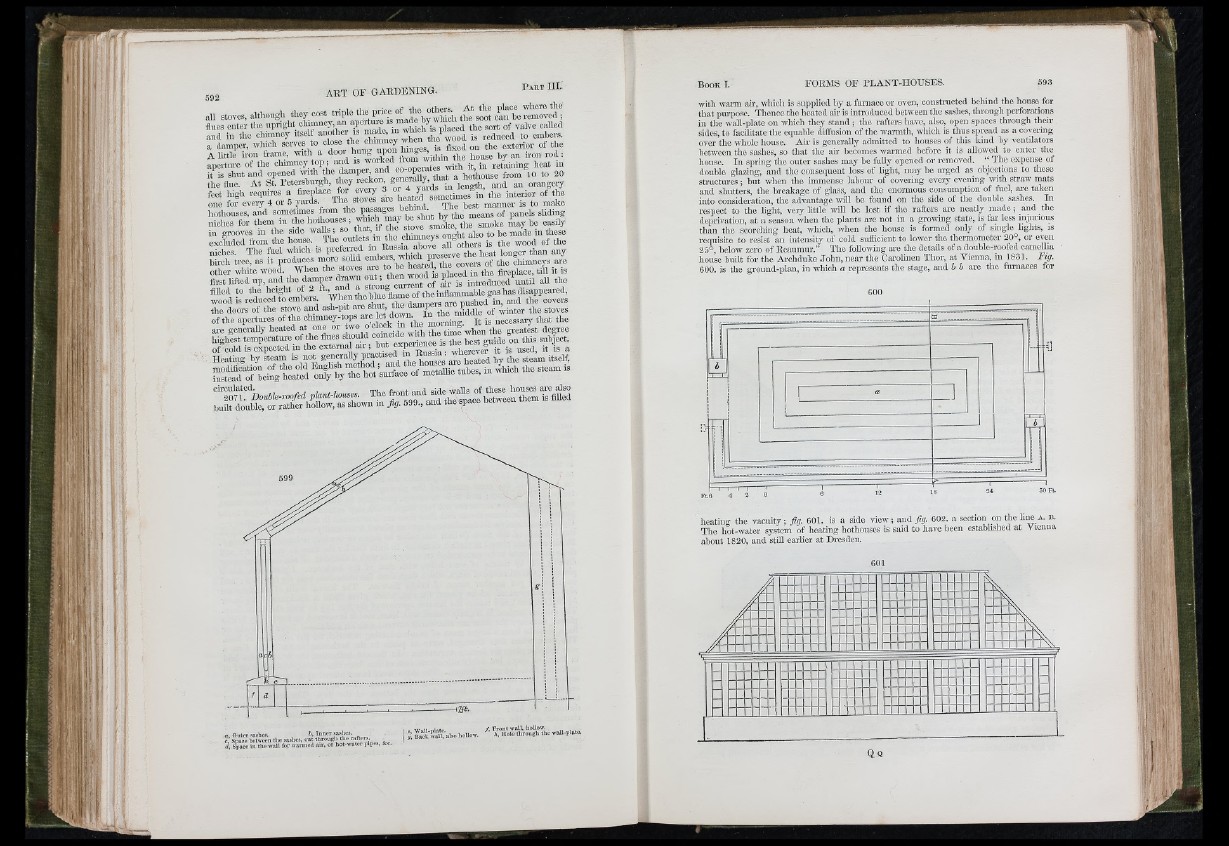
,3 2 a r t O F GzAEDENING.
1 s t o v e s , «
flues enter the upright ohimuey, an '®. “ Voh is placed the sort of valve called
aud iu tho clumney L to eM to n ? eLvood is reduced to embers,
a damper, wlneh selves to M l * ¡1 feed on the exterior of the
» » 7 n7 » d 7 »
S S a p » »
niches. The fuel whieh is preferred " I?es7e LTheat longer than any
S i ; “ " ± £ i £ ' S , r :
B s S S S ^ i H
with warm air, wliich is supplied by a furnace or oven, constructed behind the house for
that pm-pose. Thence the heated air is introduced between the sashes, throngh perforations
iu the wall-platc on which they stand ; the rafters have, also, open spaces through their
sidcs, to facilitate the equable diffusion of the wannth, which is thus spread as a covering
over the whole house. Air is generally admitted to houses of this Idnd by ventilators
between the sashes, so that the air becomes warmed before it is allowed to enter the
house. In spring the outer sashes may be fully opened or rcmoi'ed. ‘‘ The expense of
double glazing, and tlic consequent loss of light, may be urged as objections to these
structures; but when tho immense labour of covering every evening with straw mats
and shutters, the breakage of glass, and the enoi-mous consumption of fuel, ai-c taken
into consideration, the advantage will be found on the side of the double sashes. In
respect to the light, very little will be lost if the rafters are neatly made; and the
deprivation, at a season when the plants are not in a growing state, is far less injurious
than the scorching heat, which, when the house is formed only of single lights, is
requisite to resist an intensity of cold sufficient to lower the thermometer 20°, or even
25°, below zero of Reaumur.” The following arc the details of a double-roofed camellia
house built for the Ai-chduke John, near the Carolinon Thor, at Vienna, in 1831. Pig.
600. is the ground-plan, in which a represents the stage, and b b are the fiirnaces for
I" 1
heating the vacuity; fig . 601. is a side view; and fig . 602. a section on the Ime a. b.
The hot-water system of heating hothouses is said to have been established at Vienna
about 1820, and still earlier at Dresden.